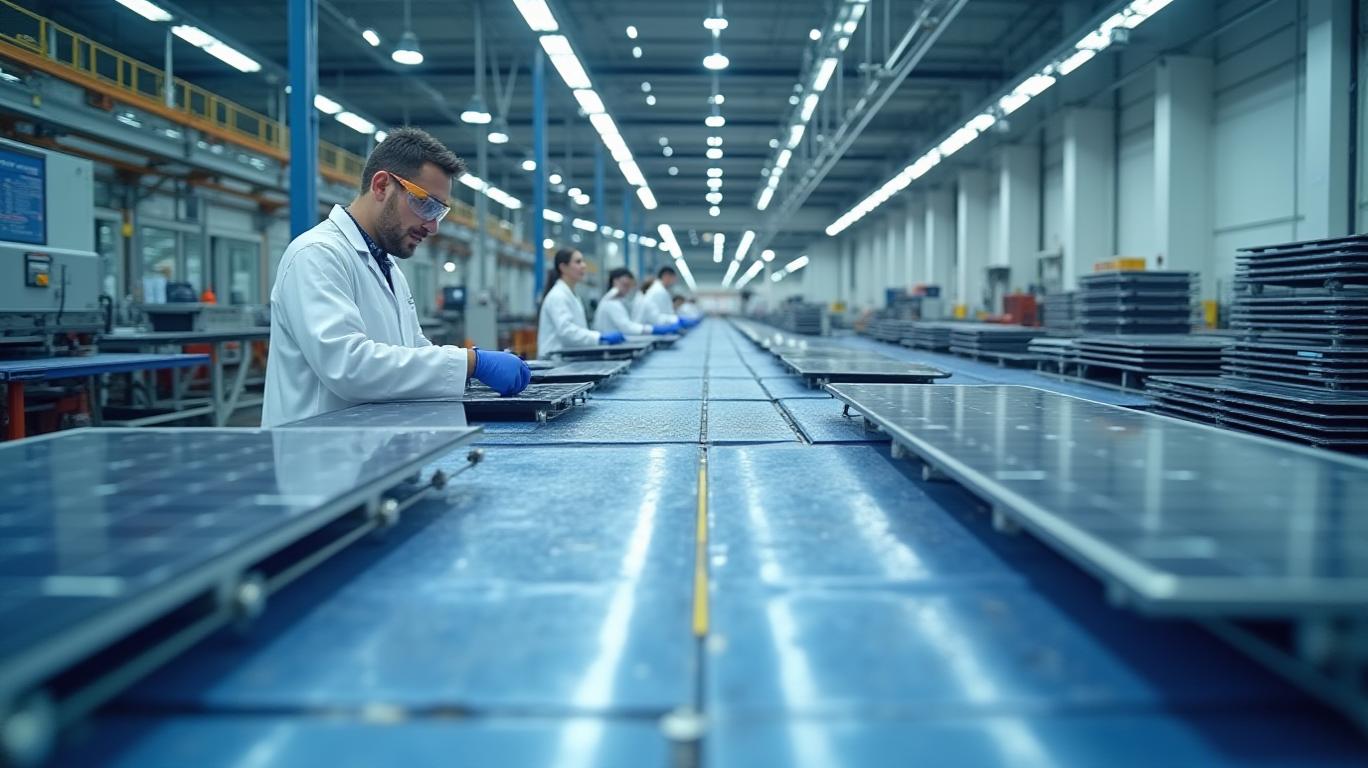First Solar Naviges Tariff Turbulence with Strong Q1 Performance, but Challenges Loom Ahead
First Solar, Inc. (FSLR) delivered robust first-quarter 2025 financial results, bolstered by soaring demand for its domestically manufactured solar panels. The company’s Q1 earnings of $2.47 per share, a 12.3% year-over-year increase, exceeded expectations, while its backlog surged to $10.2 billion, up 20% from 2024. Yet, the true headline lies in how first solar is leveraging the U.S. Commerce Department’s April 2025 tariffs—which impose duties of up to 50.43% on solar imports—to reshape its competitive landscape.
The tariffs, targeting unfair trade practices by Asian manufacturers, have created a seismic shift in the U.S. solar market. First Solar, which relies entirely on U.S.-based production in Ohio and Indiana, stands to gain 10–15% market share in 2025 as developers pivot to domestic suppliers to avoid prohibitive costs. Competitors like JinkoSolar (JKS) and SunPower (SPWR), which source panels from tariff-affected regions, now face $135M net losses and supply chain chaos.

Financial Resilience Amid Tariff Winds
First Solar’s Q1 results underscore its operational strength:
- Revenue: $1.2 billion (up 18% YoY), driven by 18–20 GW module sales guidance for 2025.
- Margins: A 31.08% net profit margin, fueled by $437.9M in EBITDA, reflects superior cost control.
- Backlog: A record $10.2B, with 44.2% gross margins, highlights pricing power amid rising polysilicon costs.
The company’s debt-to-equity ratio of 0.08 further signals financial stability, contrasting sharply with peers burdened by debt or supply chain disruptions.
Tariff Catalysts and Strategic Adjustments
The April 22 tariff announcement sparked a 12.32% single-day stock surge, valuing First Solar at over $23B. Analysts attribute this to the tariffs’ alignment with the company’s “American-made” strategy, which positions it as a beneficiary of the Inflation Reduction Act’s clean energy incentives.
However, First Solar faces execution risks:
- Supply Chain Shifts: Plans to expand production in Mexico (under the USMCA tariff exemption) and domestically to offset input costs.
- Cost Pressures: Polysilicon prices remain volatile, and the company’s guidance now includes contingency plans for higher material expenses.
- Policy Uncertainty: A potential Republican-led Congress could weaken solar tax credits, undermining demand.
Analysts Remain Bullish, but Risks Persist
Despite challenges, 27 of 34 analysts rate First Solar a “Strong Buy,” with a $238.22 average price target—implying an 81.7% upside from April 2025 levels. The consensus hinges on the company’s ability to:
1. Scale production to meet its $5.3–5.8B net sales guidance.
2. Maintain margins amid polysilicon volatility.
3. Navigate geopolitical risks, including trade disputes and regulatory shifts.
Conclusion: A Resilient Play, but Not Without Hurdles
First Solar’s Q1 results affirm its dominance in the U.S. solar market, amplified by tariffs that favor domestic producers. With a $10.2B backlog, industry-leading margins, and a strong balance sheet, the company is well-positioned to capitalize on the clean energy boom.
Yet, risks loom large. polysilicon cost pressures, supply chain bottlenecks, and potential policy changes under a new administration could test its growth narrative. Investors should also note the stock’s volatility—31 days of 5%+ swings in the past year—highlighting the sector’s sensitivity to macroeconomic shifts.
For now, the “Strong Buy” consensus and $238 price target reflect optimism that First Solar’s U.S.-centric model will outperform peers in a fragmented market. But as the trade war rages and polysilicon prices fluctuate, execution will be the ultimate determinant of whether this stock soars or stumbles.

_b905d9341749265671656.jpg)








